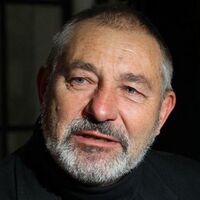Stan Curtis: Difference between revisions
Jump to navigation
Jump to search
(Created page with "{{Person |portrait=Stan Curtis.jpeg |firstname=Stan |middlename= |lastname=Curtis |sector=Wellbeing |company=Urban.Systems |position=SVP Business Development |location=Portlan...") |
No edit summary |
||
| Line 2: | Line 2: | ||
|portrait=Stan Curtis.jpeg | |portrait=Stan Curtis.jpeg | ||
|firstname=Stan | |firstname=Stan | ||
|lastname=Curtis | |lastname=Curtis | ||
|company=Urban.Systems | |company=Urban.Systems | ||
|position=SVP Business Development | |position=SVP Business Development | ||
|location=Portland, OR | |location=Portland, OR | ||
|country=United States | |country=United States | ||
|sector=Wellbeing | |||
|linkedin=https://www.linkedin.com/in/stan-curtis-056b61 | |linkedin=https://www.linkedin.com/in/stan-curtis-056b61 | ||
}} | }} | ||
Revision as of 07:15, March 14, 2022

| |
| Name | Stan Curtis |
| Company | Urban.Systems |
| Company Position | SVP Business Development |
| City, State | Portland, OR |
| Country | United States |
| Sectors | Wellbeing |
Activities

|
CIVIC school HUBS | |
| NSF CIVIC grant to incubate the Federal School Infrastructure Toolkit for more resilience Community services. A pilot program with be developed with the BENSON school district in Portland, and woven into the urban/rural network of the Metro regional emergency response. | ||

|
Decision Theatre PSU | |
| Portland State University’s Decision Theater is designed for university researchers and regional stakeholders (i.e. government, private companies) to work on projects that “link data sets, visualization and decisions,” according to a university statement. The space is modeled after Arizona State University's Decision Theater, as well as a similar facility at the University of Chicago. | ||

|
Open 988 | |
| 988 has been designated as the new three-digit dialing code that will route callers to the National Suicide Prevention Lifeline. While some areas may be currently able to connect to the Lifeline by dialing 988, this dialing code will be available to everyone across the United States starting on July 16, 2022. | ||

|
Resilience HUB - East Multnomah | |
| Resilience Hubs are community-serving facilities augmented to support residents and coordinate resource distribution and services before, during, or after a natural hazard event. They leverage established, trusted, and community-managed facilities that are used year-round as neighborhood centers for community-building activities. Resilience Hubs can equitably enhance community resilience while reducing greenhouse gas emissions and improving local quality of life for our communities. They have the potential to reduce burden on local emergency response teams, improve access to public health initiatives, increase the effectiveness of community-centered institutions and programs. | ||

|
School Organized Locally Assisted Community Emergency‐Management | |
| The School Organized Locally Assisted Community Emergency‐Management (SOLACE) project focused on the use of a community school as a community resilience hub for its surrounding community. Community Resilience Hubs (CRHs) can be defined as community‐serving facilities augmented to support residents and coordinate resource distribution of resources and services to the surrounding community. This project focused specifically on the use of a CRM to support community member needs before, during, or after a natural hazard event and on developing a community‐led sociotechnical infrastructure framework for adapting a public school (Buckman Elementary School) as the pilot CRH. In 2022, this project received a NSF Planning Grant. | ||
Blueprint Chapters

|
Electrification | |
| Electrifying everything refers to replacing our fossil-fuel economy with wind, solar, hydro, electric vehicles, heat pumps, and a masterfully designed electric grid that allows a two-way transfer of energy. | ||

|
Measurement | |
| Wellbeing refers to a state of being happy, healthy, and comfortable in one's life. It encompasses a range of physical, mental, and emotional factors, and can be influenced by a variety of factors such as genetics, environment, and personal choices. | ||

|
Resilience Hubs | |
| This chapter demonstrates how integrated smart systems that draw on a number of technologies, processes, and data can enable a community structures to function more efficiently for their main purpose as well as be prepared to serve as a “community resiliency hub” and/or “emergency shelter” as needed. Selecting a school as a community resilience hub leverages its existing function for families already charged with protecting children, employing vetted professionals, and communicating with parents, public safety agencies, and city government as well as embuing the school with some additional important functions and responsibilities to an extended community population. (The pilot for this project--using the Buckman School in Portland, Oregon--received a National Science Foundation Planning Grant in 2022.) | ||